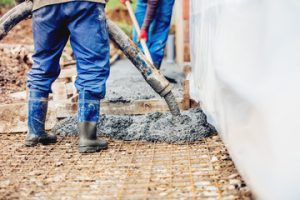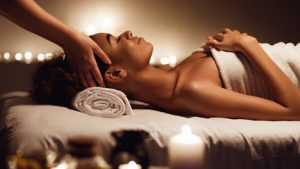A plumbing company today is far from the image people once had of pipes, wrenches, and quick repairs. Modern providers are redefining the industry by adopting cutting-edge technologies that elevate service efficiency. These companies no longer limit themselves to reactive problem-solving but embrace proactive maintenance strategies. This shift is changing how clients view the value and role of plumbing professionals.

One area seeing remarkable change is the integration of smart water management systems into residential and commercial settings. Plumbing companies now install sensors that detect leaks before they become catastrophic. These devices send alerts in real time, reducing property damage and lowering water bills. The approach transforms plumbing from a purely mechanical trade into a tech-enabled service.
Water conservation has also become a driving force behind modern plumbing strategies. Many companies now offer eco-friendly solutions such as advanced water recycling and filtration systems. This reduces the environmental footprint while providing long-term savings for clients. The emphasis on sustainability is attracting environmentally conscious customers and aligning plumbing with global conservation efforts.
Another trend is the use of trenchless technology to replace or repair underground pipes without major excavation. This innovation minimizes disruption to landscapes and infrastructure. It also speeds up project timelines, saving both time and money for property owners. Such methods are now preferred over traditional digging in many scenarios.
The rise of remote diagnostics has also transformed service response times. Plumbing companies use specialized tools to analyze water flow, pressure, and pipe condition without stepping on site. This allows for faster troubleshooting and precise cost estimates before physical work begins. The result is improved customer satisfaction and better allocation of resources.
Custom fabrication of plumbing components is another advancement reshaping the industry. Some companies create bespoke fittings and connectors using 3D printing technology. This eliminates delays caused by unavailable parts and ensures a perfect fit for unique installations. It also opens new possibilities for creative and efficient system designs.
Plumbing companies are also evolving in how they approach customer communication. Many now use mobile apps or digital portals for scheduling, billing, and progress tracking. This transparency fosters trust and makes the entire process more convenient for clients. Digital platforms also allow instant feedback, helping companies refine their services quickly.
Specialized plumbing services are gaining popularity, focusing on niche markets such as medical facilities or industrial plants. These environments require strict compliance with safety and sanitation standards. Plumbing companies offering these services must maintain deep technical expertise and adaptability. This specialization often commands higher rates due to the skill required.
Training and skill development remain a critical factor in keeping plumbing services relevant. Companies invest heavily in upskilling their technicians through workshops, simulations, and certifications. This ensures that staff are equipped to handle emerging technologies and complex systems. Continuous education also boosts service quality and safety compliance.
Sustainability efforts now extend beyond water usage to include energy efficiency. Plumbing companies are installing systems that minimize energy waste in heating and water circulation. This includes low-energy pumps, heat recovery systems, and optimized layouts. The combination of water and energy efficiency creates a compelling value proposition for clients.
Collaboration with other trades is also becoming more common in large-scale projects. Plumbing companies now work closely with engineers, architects, and environmental consultants. This integrated approach ensures that plumbing systems are efficient, sustainable, and seamlessly aligned with the overall design. It also helps prevent costly changes during later stages of construction.
Another area of innovation is the use of augmented reality for design and troubleshooting. Technicians can visualize hidden pipes and potential problem areas through AR devices. This leads to more accurate installations and quicker repairs. It also enhances safety by reducing unnecessary exploratory work.
The expansion of subscription-based plumbing maintenance plans is reshaping business models. Instead of waiting for emergencies, clients pay a monthly or annual fee for ongoing inspections and tune-ups. This predictable revenue stream benefits the company, while customers enjoy fewer breakdowns and reduced repair costs. Such models encourage stronger long-term client relationships.
Plumbing companies are also taking a more holistic approach to indoor water quality. They provide advanced testing services to detect contaminants and design systems that ensure safe, clean water. This extends beyond basic filtration, incorporating multi-stage purification processes. Health-conscious clients find this service especially valuable.
In the commercial sector, the focus is on optimizing high-demand water systems. Plumbing companies design layouts that prevent pressure drops during peak usage. They also implement monitoring tools to detect early signs of wear in critical infrastructure. These measures keep businesses running smoothly and avoid costly downtime.
Data-driven decision-making has emerged as a competitive advantage. By analyzing past service records, water usage trends, and system performance, plumbing companies can anticipate problems before they occur. This predictive approach reduces emergencies and improves operational efficiency. Clients benefit from more reliable and cost-effective solutions.
Reputation management is also evolving in the plumbing industry. Companies now leverage social media and digital review platforms to showcase their expertise. They highlight successful projects, eco-friendly initiatives, and community involvement. This visibility helps attract new clients and reinforces credibility.
Even the tools and materials used by plumbing companies are undergoing change. Modern equipment is lighter, more precise, and often multifunctional, reducing strain on technicians. Advanced materials such as corrosion-resistant alloys and high-performance polymers are replacing traditional metals. This results in longer-lasting installations with fewer maintenance needs.
Plumbing companies are also experimenting with modular systems that can be easily upgraded or expanded. This flexibility is particularly appealing to clients who anticipate future renovations. It reduces waste by reusing existing infrastructure rather than replacing it entirely. Modular approaches also speed up installation timeframes.
The focus on resilience has grown due to extreme weather events and aging infrastructure. Plumbing companies are designing systems that can withstand flooding, freezing, and other environmental challenges. They use materials and layouts that reduce vulnerability to damage. These solutions provide peace of mind in uncertain conditions.
Community engagement is becoming part of the brand identity for many plumbing companies. They participate in educational programs that teach water conservation and maintenance basics. Some offer discounted services to underserved areas as part of social responsibility initiatives. This builds goodwill and strengthens customer loyalty.
The role of the plumbing company is expanding from simple service provider to trusted advisor. Clients increasingly rely on them for long-term planning, efficiency audits, and compliance guidance. This deeper involvement fosters partnerships rather than one-off transactions. The industry is steadily moving toward a consultative model.
Future trends point toward greater automation in plumbing systems. Self-adjusting valves, automated leak detectors, and AI-driven water management software will become common. Plumbing companies that adapt quickly to these technologies will stay ahead of the competition. Those that resist may find themselves left behind.
Overall, the modern plumbing company is a blend of craftsmanship, innovation, and customer-centric service. It embraces technology without losing sight of the importance of human expertise. The changes shaping this industry are making it more efficient, sustainable, and adaptable than ever. For clients and providers alike, the future of plumbing looks promising and transformative.



